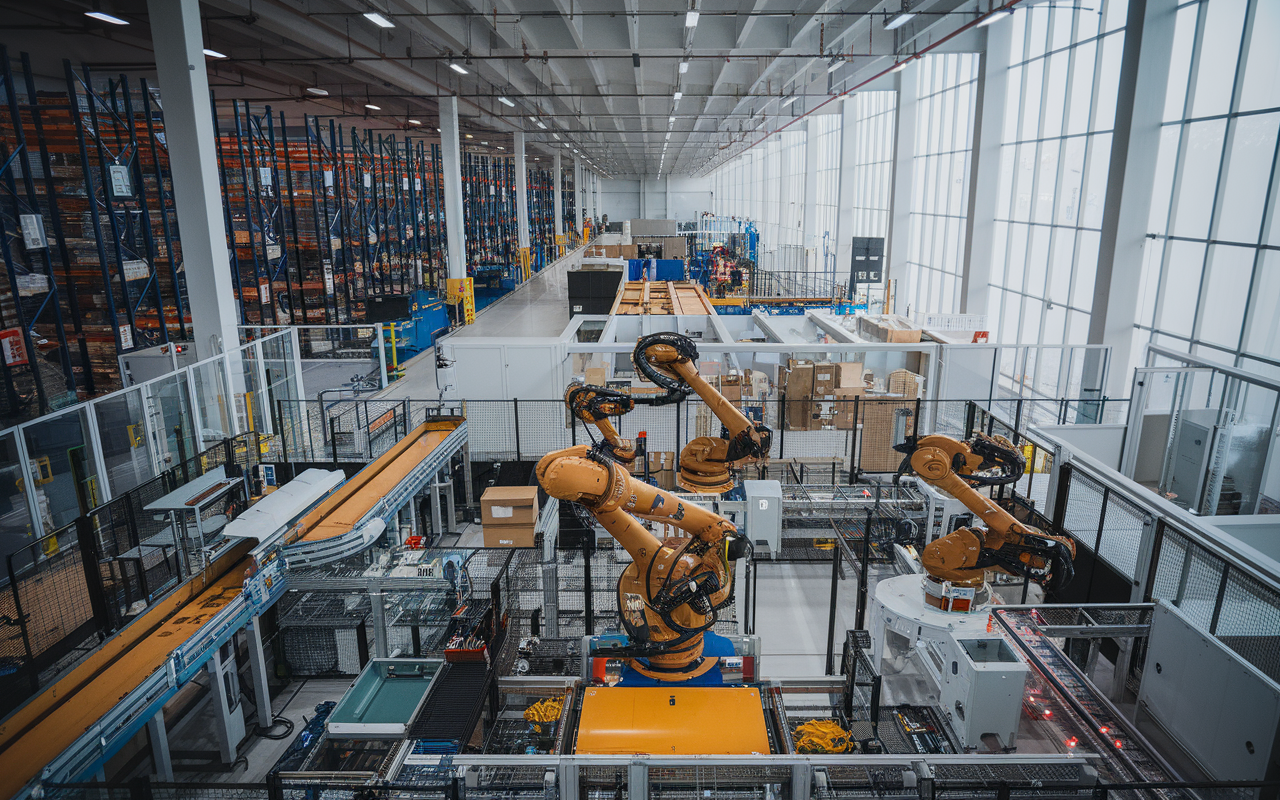🚀 Amazon's Tye Brady on the Future of Robotic Warehouses 🤖
For those who have been following the exciting advancements in technology, Amazon's latest updates on robotic warehouses certainly mark a significant leap forward! At the recent Delivering the Future event held in Nashville, Amazon's Chief Technologist for Robotics, Tye Brady, shed light on some of the impressive initiatives the retail giant is undertaking to enhance logistics and fulfillment processes. 📦✨
In the rapidly evolving world of e-commerce, Amazon is at the forefront, currently boasting over 750,000 robots deployed across its U.S. fulfillment centers. This astonishing number reflects Amazon's commitment to robotics, though Brady emphasizes that it only accounts for their autonomous mobile robots (AMRs). These are the wheeled wonders that have transformed warehouse operations since Amazon’s acquisition of Kiva Systems back in 2012. 🚚💨
What's New in Amazon Robotics?
During the event, while no new robotics systems were unveiled, the focus was on how Amazon is seamlessly integrating existing technologies. One of the standout features discussed was Sequoia—a massive automated storage and retrieval system. This innovative robot aims to significantly enhance efficiency, especially after a newly-scaled system went live at a fulfillment center in Shreveport, Louisiana. 🏢💡
Brady explained that Amazon is strategically retrofitting its existing facilities rather than building new ones from the ground up, allowing them to maintain operations while upgrading systems. He fascinatingly referred to this as "fixing the airplane while it’s flying" — a perfect metaphor for the complex logistics involved! ✈️🔧
The Human Element in Automation
What stands out in Brady’s discussion is the acknowledgment of the human element within the automated ecosystem. While robots are undeniably efficient, Brady insists that human expertise remains irreplaceable—especially in problem-solving and contextual understanding. 🧠❤️ As the automation expands, Amazon plans to create more roles for humans, including 25% more reliability maintenance engineering positions, emphasizing a collaborative future for humans and machines. 🤝
The Role of AI and Robotics
The collaboration with AI is another cornerstone of Amazon’s strategy. With initiatives like Covariant—a startup recently acquired that focuses on enhancing the capabilities of robotic arms—Amazon is ensuring that its robotics can handle even the most complex logistics scenarios. According to Brady, the Sparrow robotic arm is already capable of managing over 200 million unique products, showcasing just how advanced their technology has become! 📊🤖
Looking Ahead 🌟
As Brady reflects on the past year's journey in robotics, he's also taking a measured approach towards the future, particularly with the integration of humanoid technologies. While there has been experimentation with humanoid systems like Agility’s Digit, the current focus remains on optimizing existing workflows with technology that enhances productivity without disrupting operations.
Conclusion
The world of robotic warehouses is not only fascinating but also filled with potential! Amazon's commitment to developing advanced robotic solutions that prioritize both efficiency and human employment marks a significant step in the evolution of logistics. 🚀💼
Stay tuned for more updates about the next-gen technologies reshaping our shopping experiences!
What are your thoughts on the future of robotics in warehousing? Do you think automation will lead to more jobs or fewer? Share your opinions in the comments! 💬👇
#Robotics #AmazonRobotics

More Stories
Meta’s AR Ambitions and AI Safety: Insights from the Equity Podcast
Insight Partners Data Breach: A Wake-Up Call for Cybersecurity Awareness
Lovable’s Ascendancy: Anton Osika at TechCrunch Disrupt 2025